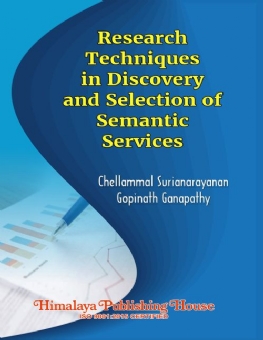Dynamic Service Composition gains significant momentum in industry as a means to develop higher level services, so-called composite services by combining functionality provided by individual or atomic services. The primary feature of dynamic service composition is its ability to compose services at run time taking into account the unprecedented changes in business processes. That is, in dynamic service composition, the planning of tasks that are capable of fulfilling a given business process, discovery of concrete services for implementing various tasks, selection of services based on non-functional characters and invocation are taking place in run time.
Dynamic service composition is complex as it has to deal with two conflicting aspects namely changing business requirements (which imply that composite services are created based on run-time demands) and steady growth of services in the Web with frequent update of service interfaces. The aspects/issues which affects dynamic service composition include planning at runtime, similarity (or compatibility) demands, composability among services, automation of discovery, high retrieval accuracy, optimization of discovery, selection of best services based on Quality of Service (QoS), optimization of selection, substitutability of services when a service fails at its invocation, transactional support, handling run-time faults and errors, etc. Though different aspects of dynamic service composition are handled by several existing approaches, according to our survey, the issues, namely, accomplishment of disparate similarity demands of client applications, efficient method of decomposing QoS constraints to tasks of combinational workflows having execution patterns such as AND, OR, Loop, etc., difficulties in constructing queries while discovering services, efficient methods for optimizing the performance of discovery and selection are still open.
This book contributes a set of methods to address the thus said open issues of dynamic services composition. The objective of the book is to provide a set of methods that computationally optimizes the performance of discovery and selection processes of semantic services considering the similarity demands, QoS demands and difficulties in constructing queries using efficient techniques. Firstly, this book proposes new level Degree of Match (DoM) for expressing semantic relations among concepts by extending the existing levels to get high retrieval accuracy as well as to provide a means to clients to express their required level of similarity demands. These levels form the essentials/base of the proposed methods for optimizing discovery and selection. Also, the fine split in DoM provides better control in incorporating the required similarity demands and facilitates the delivery of ranked list of discovered services. Secondly, the book addresses the issues related to performance optimization of discovery process using two different complementary techniques, namely, clustering and indexing. These two techniques gain importance for the following reasons. Clustering services into different groups by functional characteristics forms the basis for any kind of analysis or service mining and hence it becomes mandatory in SOC based development. Appropriate indexing of services help in eliminating semantic matching process (timeconsuming) entirely during runtime. Thirdly, the book handles the issues related to performance optimization of selection using three mechanisms namely a new method of decomposing QoS constraints that handles combinational workflows, multi-threaded model to select appropriate services for different tasks simultaneously and indexing of QoS properties of services. Fourthly, the book gives relaxation to consumers when they have difficulties in constructing their queries with suitable ontologies, by providing WordNet (a generic ontology) based similarity method with provision to adjust the accuracy of the method to meet customer similarity demands.
Contents –
1. Introduction
2. Literature Review
3. Computational Optimization of Service Discovery and Selection – Problem and Techniques
4. Levels of Semantic Relations
5. Computational Optimization of Semantic Service Discovery Using Clustering
6. Computational Optimization of Semantic Service Discovery Using Indexing
7. Wordnet Based Service Discovery
8. Computational Optimization of Service Selection
9. Conclusion and Future Work
References
Appendices







